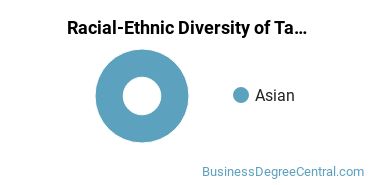Tax Law/Taxation at Illinois Institute of Technology
What traits are you looking for in a tax law/taxation school? To help you decide if Illinois Institute of Technology is right for you, we've gathered the following information about the school's tax law/taxation program.Illinois Tech is located in Chicago, Illinois and approximately 6,325 students attend the school each year.
Want to know more about the career opportunities in this field? Check out the Careers in Tax Law/Taxation section at the bottom of this page.
Featured schools near , edit
Illinois Tech Tax Law/Taxation Degrees Available
- Master’s Degree in Tax Law/Taxation
Illinois Tech Tax Law/Taxation Rankings
Note: Although rankings can help you see some information about a school, it's not a good idea to depend on them alone. Be sure to check out other things about the school before making your decision to attend.
Tax Law/Taxation Student Demographics at Illinois Tech
Take a look at the following statistics related to the make-up of the tax law/taxation majors at Illinois Institute of Technology.
Illinois Tech Tax Law/Taxation Master’s Program

The following table and chart show the race/ethnicity for students who recently graduated from Illinois Institute of Technology with a master's in tax law/taxation.

| Race/Ethnicity | Number of Students |
|---|---|
| Asian | 0 |
| Black or African American | 0 |
| Hispanic or Latino | 0 |
| White | 0 |
| International Students | 1 |
| Other Races/Ethnicities | 0 |
Related Majors
Careers That Tax Law/Taxation Grads May Go Into
A degree in tax law/taxation can lead to the following careers. Since job numbers and average salaries can vary by geographic location, we have only included the numbers for IL, the home state for Illinois Institute of Technology.
| Occupation | Jobs in IL | Average Salary in IL |
|---|---|---|
| Lawyers | 31,260 | $152,980 |
References
*The racial-ethnic minorities count is calculated by taking the total number of students and subtracting white students, international students, and students whose race/ethnicity was unknown. This number is then divided by the total number of students at the school to obtain the racial-ethnic minorities percentage.
- College Factual
- National Center for Education Statistics
- O*NET Online
- Image Credit: By Thomas Knapp under License
More about our data sources and methodologies.
Featured Schools
You have goals. Southern New Hampshire University can help you get there. Whether you need a bachelor's degree to get into a career or want a master's degree to move up in your current career, SNHU has an online program for you. Find your degree from over 200 online programs.
Visit School
